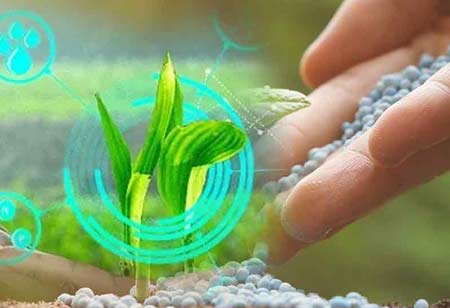Thank you for Subscribing to Agri Business Review Weekly Brief
Natural Factors Of Soil Erosion
Erosion degrades soil quality and is a major reason for farmland loss in the world.

By
Agri Business Review | Saturday, October 15, 2022
Stay ahead of the industry with exclusive feature stories on the top companies, expert insights and the latest news delivered straight to your inbox. Subscribe today.
Satellite technologies for remote crop control can support this because soil erosion connects with the vegetation level in a field.
FREMONT, CA: Erosion degrades soil quality and is a major reason for farmland loss in the world. Learning soil erosion causes and its mechanisms will retard field destruction. Its effects can be too severe, but prevention and reduction measures and early problem detection will mitigate the risks. Satellite technologies for remote crop control can support this because soil erosion connects with the vegetation level in a field.
Soil Erosion
Erosion of soil is the deterioration of land because of the removal of its particles. It comprises three basic stages: dislodgement, transportation, and sedimentation. Their speed relies on the soil type, aggregation, infiltration, and ground cover.
For instance, well-aggregated fields are less vulnerable, and bare lands are the easiest to be destroyed. Slopes need additional protection from water erosion during rain showers, which can be treated with cover crops, perennial grasses, or terrace farming.
Causes Of Soil Erosion
There are natural and anthropogenic factors. Winds or quick water run-offs preempt topsoil in fields during heavy rainfalls. Still, soil erosion is also caused by farming when it is managed poorly.
Natural Factors Of Soil Erosion
- Strong wind gusts. Heavy winds remove dry tiny earth particles, a typical problem in semi-arid regions that lead to desertification.
- Climate change. Unusual rainfalls or temperature leaps destroy the field surface. Another impact of climate change on soil erosion is scrubby vegetation growth that reduces field cover and exposes it to rain and winds.
- Rainfall and Flooding. Excessive rains wash off topsoil particles, while large raindrops hit the field surface and destroy it with heavy splashes. Running currents during floods is another reason for soil erosion.
- Wildfires. Trees and shrubs retard water run-offs. When wildfires destroy forests or buffer zones, water streams have no obstacles in their way.
Soil Erosion By Human Activities
Besides natural factors, soil erosion occurs due to irresponsible farm management or deforestation for urban area expansion, tourism development, road construction, and more.
Farming Practices That Cause Soil Erosion
Natural vegetation is better protected than crops because farmlands are more vulnerable to rainfall and winds. Moreover, agricultural practices can reason soil erosion due to a reduction of biodiversity both in vegetation variety and soil microorganisms. A deficiency of organic matter and beneficial biota adversely impacts field fertility because earth particles and nutrients are removed from bare fields.
The main causes of soil erosion due to poor farm management are excessive fertilization or irrigation, conventional tillage, monocropping, overgrazing, and more. Let’s consider the impact of separate farming practices on erosive processes.
Erosion Of Soil Due to Logging And Deforestation
Any tree felling can accelerate erosive processes, be it timber harvesting or expanding agricultural lands for oil palm cultivation. When all or most trees are eliminated, the clear-cutting practice exposes the forestlands most.
Deforestation increases soil erosion. It makes forestlands more apt to erosive processes as trees:
- Cast a shadow to safeguard its surface from drying out;
- Fix the forestland with roots;
- Delay water run-offs;
- Enhance the forest floor with organic matter.





